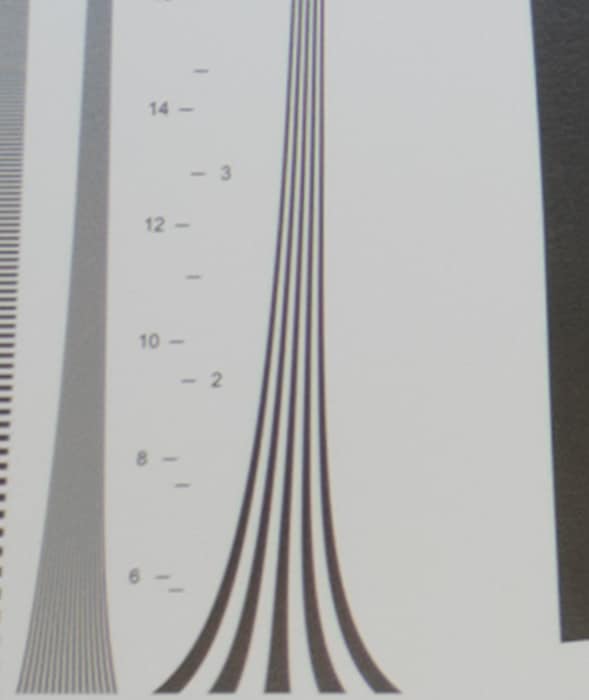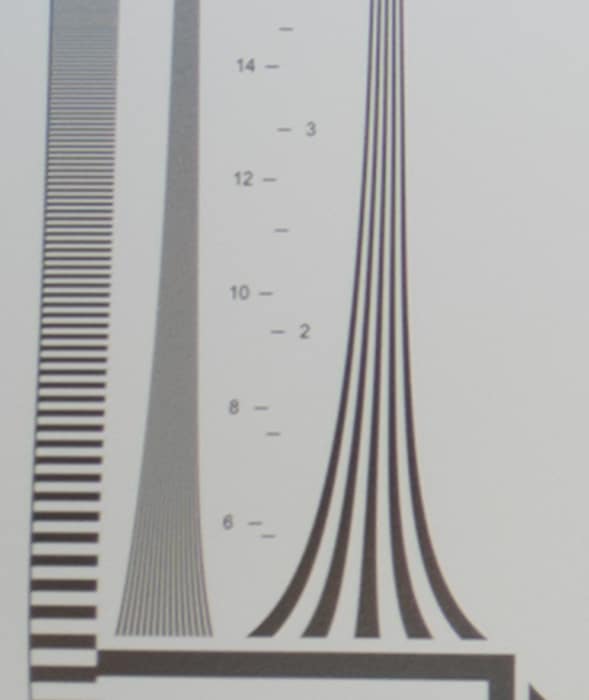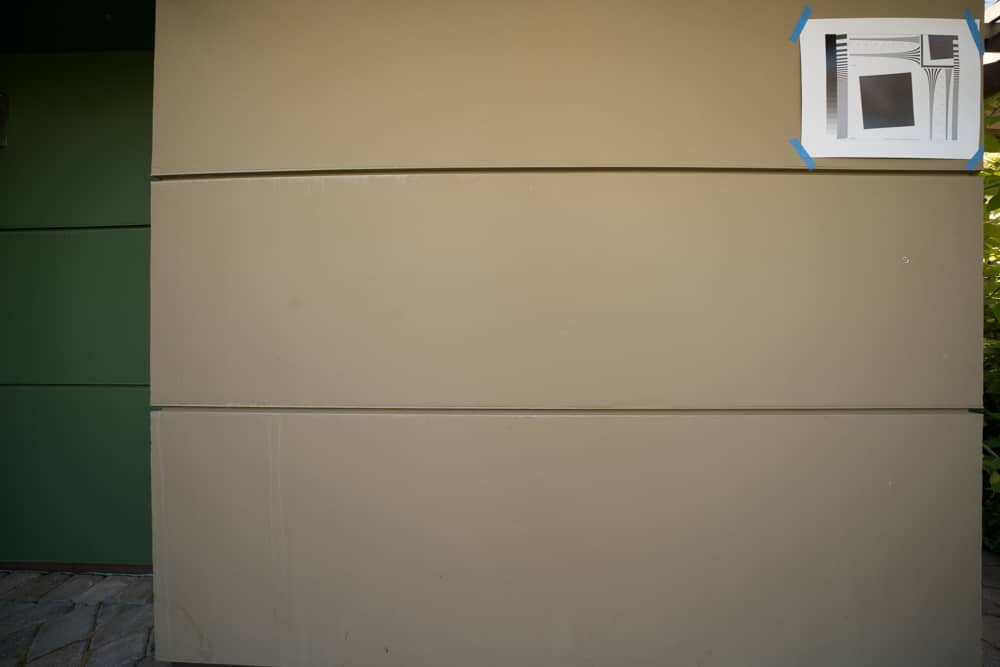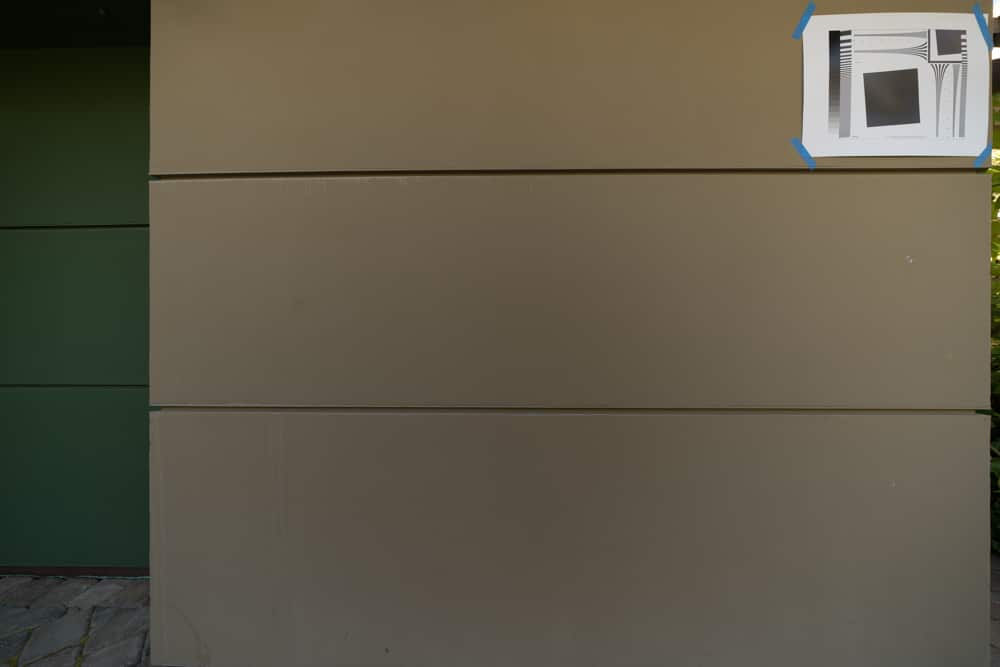This is part 13 of a test of the Sony 12-24 mm f/4 FE lens. The test starts here.
Yesterday, I showed you some images that indicated that the new Lightroom lens profile for the Sony 12-24/4 worked quite well. Several people have expressed the opinion that correcting distortion in wide rectilinear lenses in post should be avoided because of degradations in image quality (IQ). Some have said that such corrections “wreck microcontrast”.
I thought I’d run a test. I set up this scene, and made a shot with the Sony lens set to 12 mm and f/5.6, then developed the raw file in Lr with defaults except for exposure compensation and white balancing to the background of the target.
Then I applied the lens profile in Lr:
The lens profile lightens the corners in this case by about a stop and a half. Since my interest is entirely in the corner in this case, I reduced the Lr Exposure value by a stop and a half, making the center of the corrected image darker than the uncorrected one.
One thing that you can notice is the correction that looked so good in yesterday’s images has a small problem. Look at the top edge of the target. It shows a bit of barrel distortion.
Now, let’s look at the target. I’ve flipped it over so that you can read the numbers, and if you click on the cimage and adjust your browser to 100%, you’ll see the image as actual pixels.


There is almost no change to IQ. One thing to look at is the false color pattern in the upper right parts of both images. It appears to be virtually the same, and these moire patterns are quite susceptible to processing that affects the modulation transfer function (MTF).
Zooming in even tighter, and blowing the image up to well over 100%:


In both cases, the extinction point is between 6 and 8. The lens is not sharp enough in the corners at 112 mm and f/5.6 to be able to see monochromatic aliasing, which would be evident as an apparent diverging of the converging lines. You can judge microcontrast by looking at the larger fan on the right. I don’t see any material difference.
I could show you results at 18 and 24 mm, but they would be repetitive. You can stop worrying about IQ degradation from Lr’s profile corrections with this lens.
If you want graphs, here are the MTFs from the above pictures:


It looks like the corrections introduce a tiny amount of sharpening. Or maybe not, since that difference is within the noise of the test.


Is there a typo in the fourth paragraph? Should it read, “looked so good”?
Yes. Fixed. Thanks.